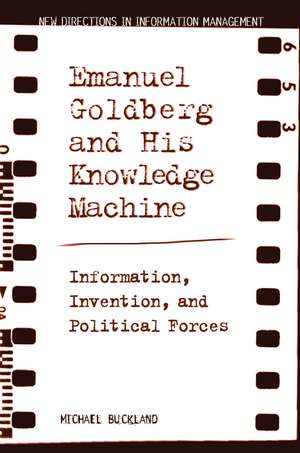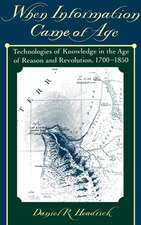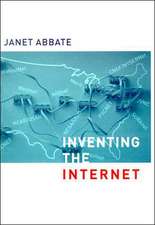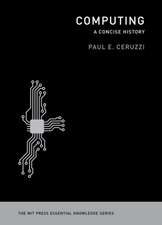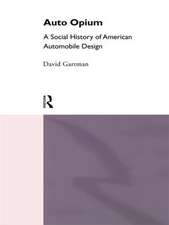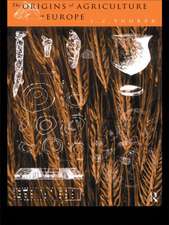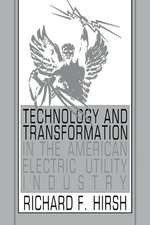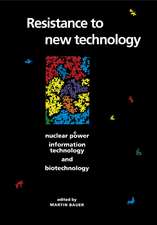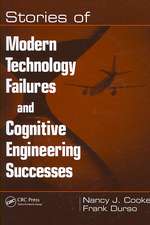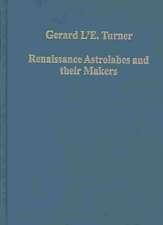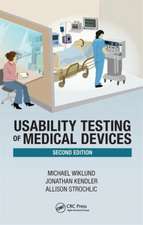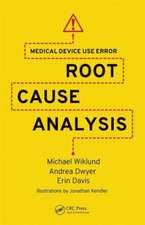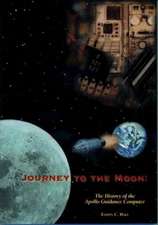Emanuel Goldberg and His Knowledge Machine: Information, Invention, and Political Forces: New Directions in Information Management
Autor Michael Bucklanden Limba Engleză Paperback – 30 mar 2006 – vârsta până la 17 ani
Preț: 275.81 lei
Preț vechi: 350.82 lei
-21% Nou
Puncte Express: 414
Preț estimativ în valută:
52.79€ • 56.98$ • 44.26£
52.79€ • 56.98$ • 44.26£
Carte tipărită la comandă
Livrare economică 18 aprilie-02 mai
Preluare comenzi: 021 569.72.76
Specificații
ISBN-13: 9780313313325
ISBN-10: 0313313326
Pagini: 400
Dimensiuni: 156 x 235 x 30 mm
Greutate: 0.62 kg
Editura: Bloomsbury Publishing
Colecția Libraries Unlimited
Seria New Directions in Information Management
Locul publicării:New York, United States
ISBN-10: 0313313326
Pagini: 400
Dimensiuni: 156 x 235 x 30 mm
Greutate: 0.62 kg
Editura: Bloomsbury Publishing
Colecția Libraries Unlimited
Seria New Directions in Information Management
Locul publicării:New York, United States
Notă biografică
Michael Buckland is Emeritus Professor, School of Information Management and Systems, and Co-Director of the Electronic Cultural Atlas Initiative, at the University of California, Berkeley. He has degrees in History from Oxford and Librarianship from Sheffield University. He has been Dean of the School of Library and Information Studies at Berkeley and President of the American Society for Information Science. Previous books include Library Services in Theory and Context (1983) and Information and Information Systems (Praeger, 1991).
Cuprins
PrefaceOriginsUniversity StudiesBerlinSophie PosniakGraphicsThe Goldberg WedgeThe Great WarIce and the KinamoThe Goldberg ConditionMicrodotsZeiss Ikon and the ContaxTelevisionThe 1931 CongressThe Statistical MachineLudwig, Killinger and MutschmannParisPalestineMilitary NeedsThe Microfilm Rapid SelectorFinaleAfter GoldbergGoldberg in RetrospectAppendix A: Texts in GermanAppendix B: Biographical SourcesAppendix C: Goldberg PatentsBibliography of Emanuel Goldberg's WritingsGeneral BibliographyIndex
Recenzii
[P]rovides a detailed history of the development of the film industry in Germany and in Europe as it pertains to photography, cinema, and microfilm. In particular, it covers much of the history of Zeiss Ikon, which Goldberg helped to found and where he worked until forced to flee Nazi Germany. The book provides a detailed picture of the major figures in the industry and extensive discussion of how many film technologies were developed and how they function. With more than 100 pages of reference sources listed, it is an invaluable resource on the history of film technology. It is an easy read and is impressively researched.
More than a tribute or a history of a technology, this book is perhaps best read as a cultural history of sorts: the life story of a man and the technologies he helped to create and how both were profoundly shaped by the political and social forces of the time. The lesson implicit in Buckland's revealing narrative is that the man himself can be understood only in the context in which he was forgotten-and it is a story well worth remembering.
The story of Emanuel Goldberg offers insights into ways of handling documentary information, and still more insights into the tragic effects that social and political developments can have on our lives. We can now honour him as he deserves. And thank Michael Buckland for making this possible.
[P]rofessor Buckland's enormous achievement in bringing to light the career of a great scientist who, like many of his German and foreign colleagues, fell victim to the nationalistic madness that virtually destroyed German culture and science between 1933 and 1945. Emanuel Goldberg has at last received the understanding and recognition that his inventive genius deserved but were not possible in his lifetime. Recommended for the libraries of schools of library and information science, for schools with graduate programs in photographic technology, and for all scholars and students of the history of library technology.
More than a tribute or a history of a technology, this book is perhaps best read as a cultural history of sorts: the life story of a man and the technologies he helped to create and how both were profoundly shaped by the political and social forces of the time. The lesson implicit in Buckland's revealing narrative is that the man himself can be understood only in the context in which he was forgotten-and it is a story well worth remembering.
The story of Emanuel Goldberg offers insights into ways of handling documentary information, and still more insights into the tragic effects that social and political developments can have on our lives. We can now honour him as he deserves. And thank Michael Buckland for making this possible.
[P]rofessor Buckland's enormous achievement in bringing to light the career of a great scientist who, like many of his German and foreign colleagues, fell victim to the nationalistic madness that virtually destroyed German culture and science between 1933 and 1945. Emanuel Goldberg has at last received the understanding and recognition that his inventive genius deserved but were not possible in his lifetime. Recommended for the libraries of schools of library and information science, for schools with graduate programs in photographic technology, and for all scholars and students of the history of library technology.
